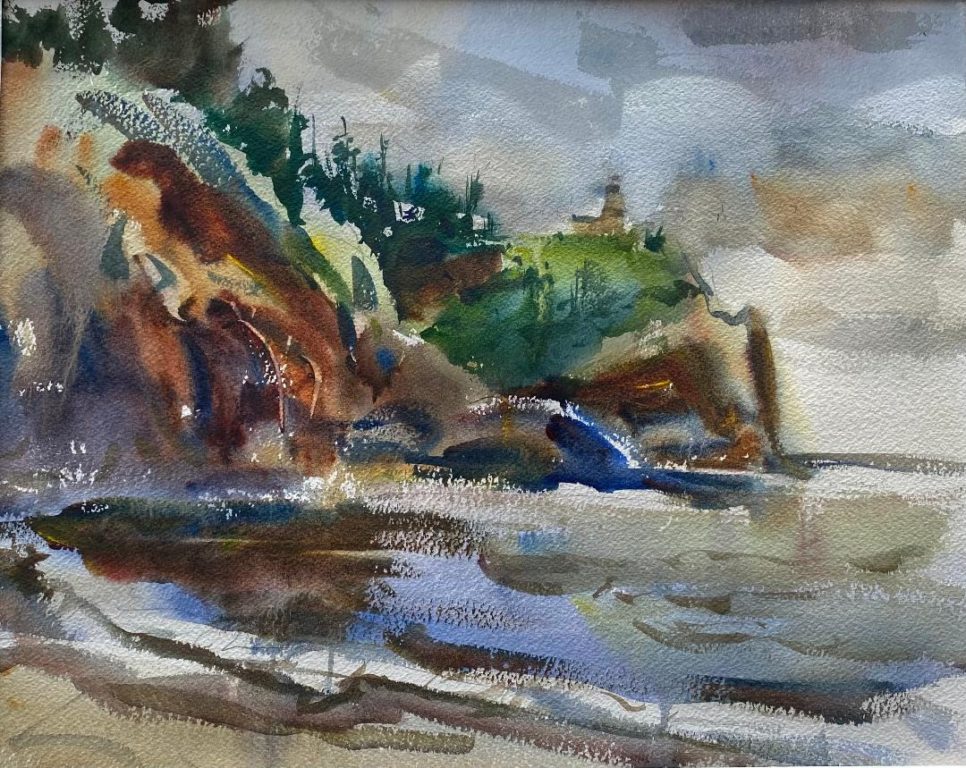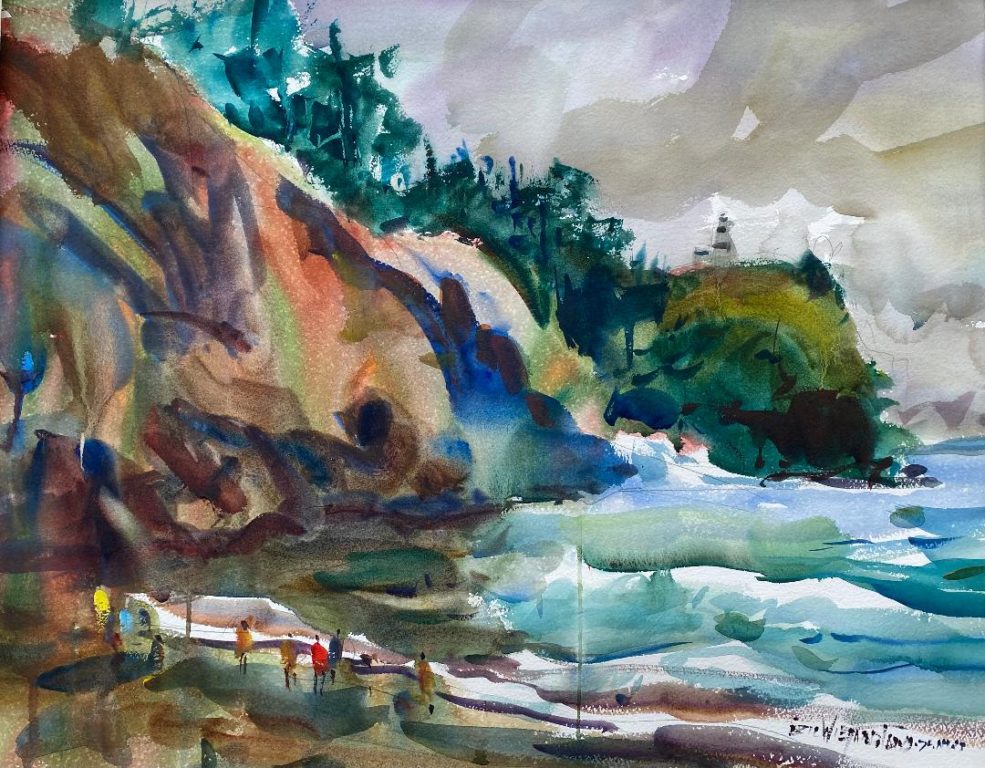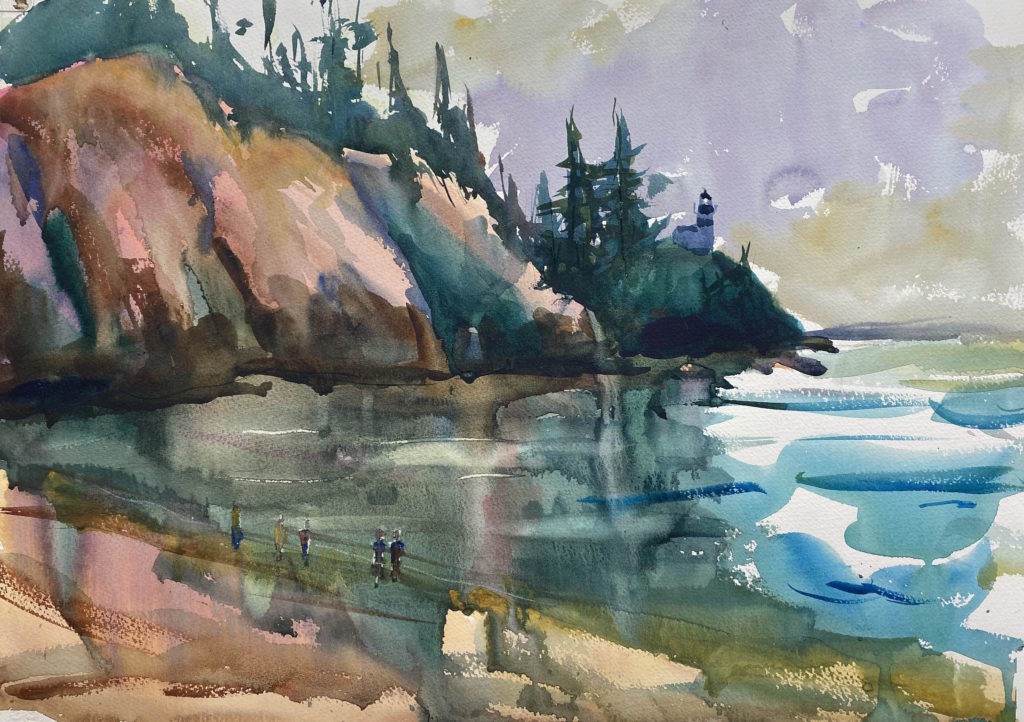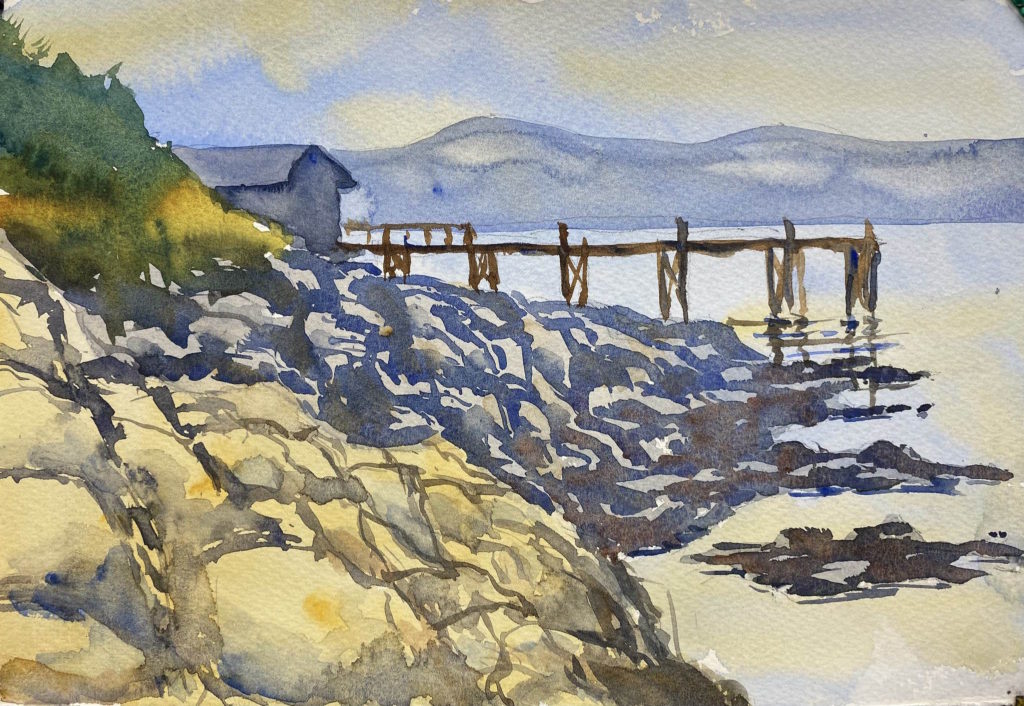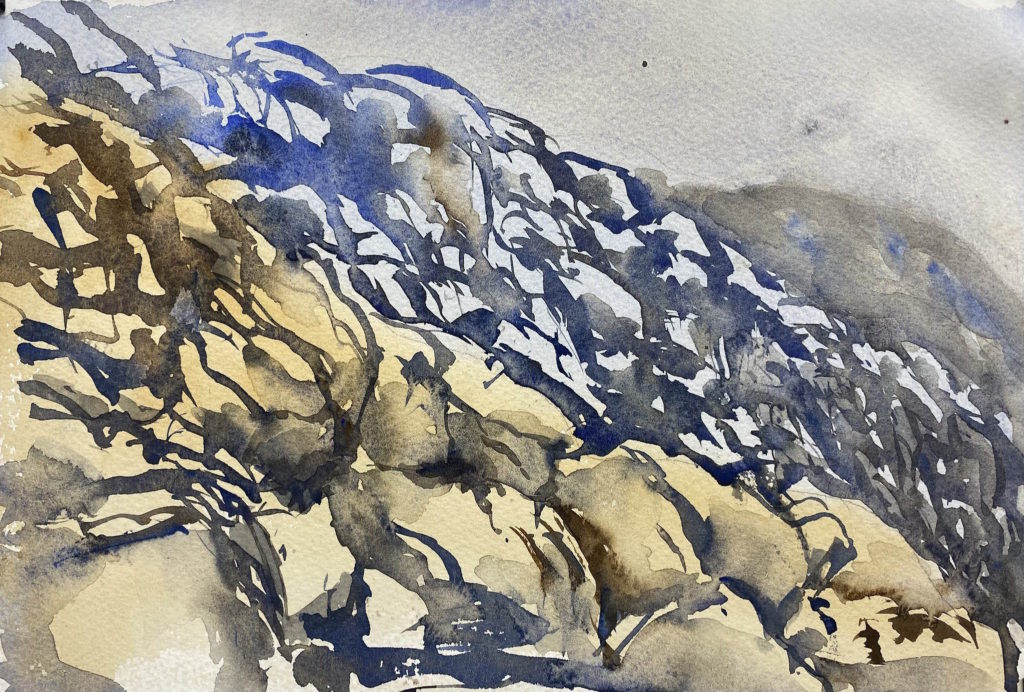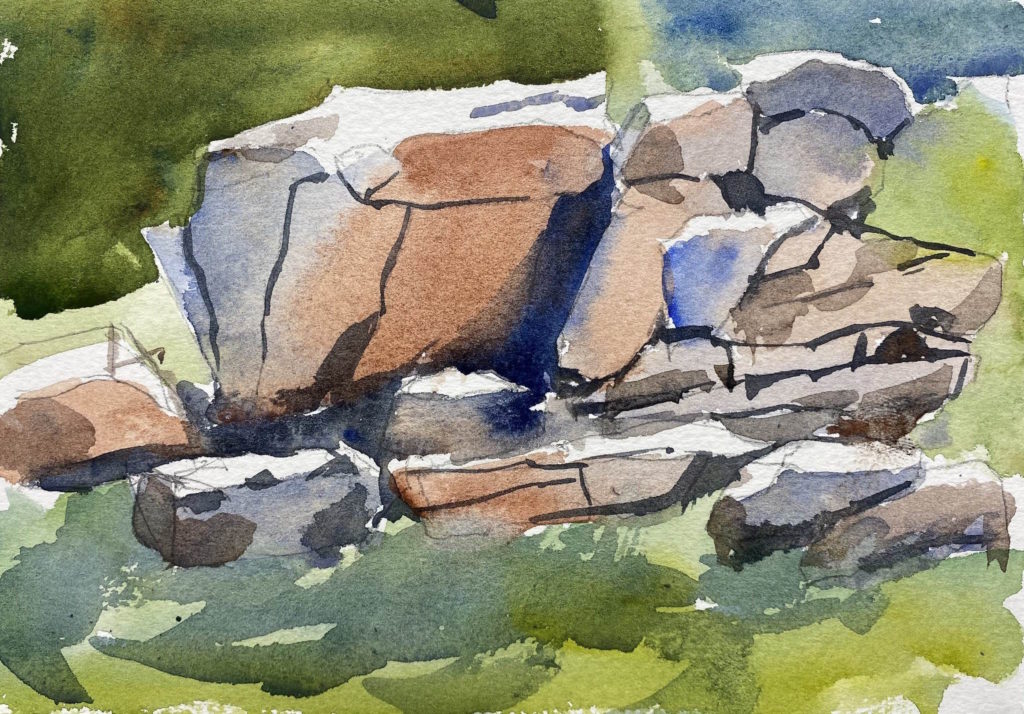Eric Wiegardt Watercolor workshop – Day Two
On the second day of the workshop we drove to the parking lot for the North Point Lighthouse. We didn’t paint the lighthouse itself, but we used the edge of the parking lot as a place to paint.

For his first demo, Eric chose a view looking out through a line of trees to the ocean below. I would never have thought of using this as a subject, so that was a good learning in itself.
He began by making several strong dark vertical marks for the tree trunks. Because his brush was at right angles to the paper, the marks weren’t solid, but they showed flecks of light on either side. Eric explained that this portrays how light wraps around a tree trunk. Don’t just make a solid line.
He went on to brush in the other trees and the foliage, using lots of paint and pushing the brush up into the foliage. He created lots of variety in spacing, color, and texture to make the trees interesting. A few strokes of the palette knife scratched out some branches.
Then he laid in a yellow foreground and filled it with purple brush strokes (the complementary color) and green for the bushes. He left some yellow near the center so that it would draw the eye to the area of dominance (the opening in the trees). He added some bright red to make this area pop.
He laid in a dark blue for the ocean, leaving some slanted areas of white to depict the waves on the beach below. “You only need a suggestion,” he said. Don’t overdo it. The sky was last, with colors from the foreground mixed in.
I set my easel up right next to his completed painting, and shamelessly copied his painting. I had watched the way he used his brush and his palette, and I made a better painting than yesterday. I was pleased that my tree trunks had flecks of light.
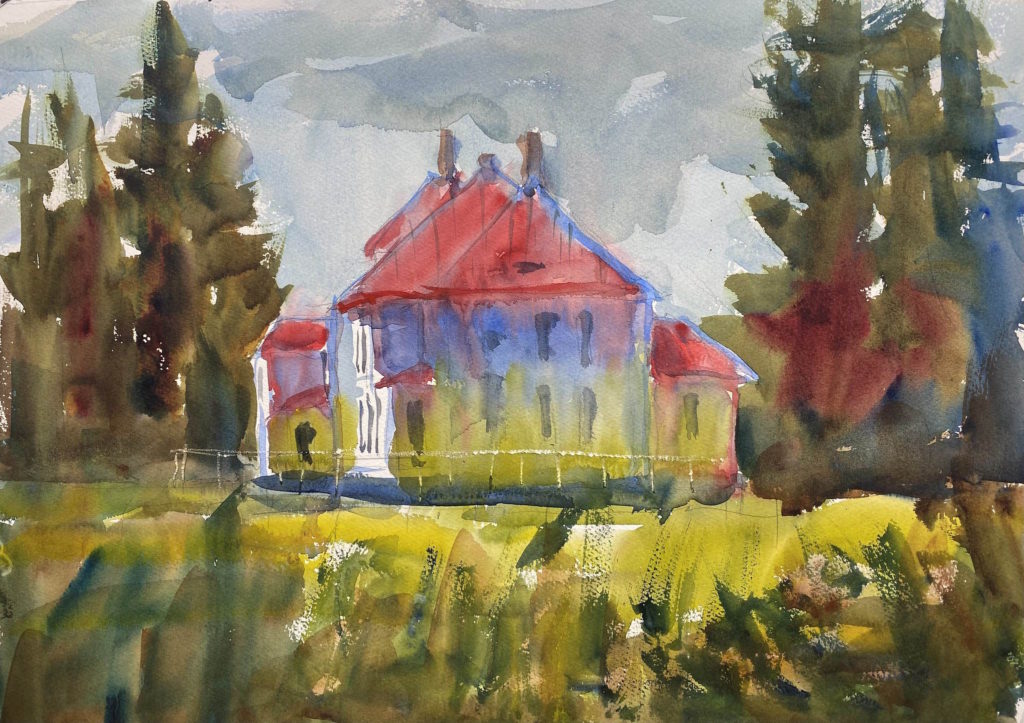
We ate our sack lunches and then Eric did a second demo. His subject was the lighthouse keeper’s house, a beautifully restored building with a peaked red roof and tall chimneys. The point of the lesson was that although the building was painted white, there are reflected colors on those white surfaces.
He painted the roof with lots of red pigment and water, so that it bled into the upper surfaces of the walls. He introduced a lot of blue in the upper walls to show the reflections from the sky, and he introduced a lot of green in the lower surfaces to show the reflections from the grass. He left a few areas pure white where the sun was shining directly on the walls. The reds, blues, and greens flowed into each other to unify the painting.
I painted the house with gusto, throwing lots of pigment and water on my paper, following Eric’s example. It seemed like too much, but that’s the best way to show off the good qualities of watercolor. I may have gotten a little carried away, but I was pleased that my colors flowed together.
After we’d finished our paintings, we lined them up for Eric to critique. His comments are given kindly, but he gently points out the places for improvement.
We took a break, then we gathered at Eric’s gallery in Ocean Park. I was knocked over when I walked in and saw a large room filled with his large colorful watercolors. They are breathtaking when you’re right in front of them. Eric gave us a tour of the gallery and his studio, where he tapes his Zoom classes, and he regaled us with stories of his family history
Afterward, we gathered across the street at Ann and Eric’s spacious house where we were fed bowls of razor clam chowder from clams that Eric had dug and frozen for this occasion. The chowder was delicious.
After we’d eaten, Ann got us to share one thing about ourselves that no one knew. There were some great stories. It was fun to visualize the other people as their younger selves.
It was a long, action-packed day, and I was tired when I got back to my tent at 9:30. After a call to Katy, I drifted off to sleep right away.
Eric Wiegardt Watercolor workshop – Day Two Read More »
